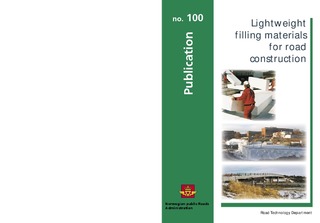| dc.description.abstract | In Norway the Public Roads Administration has a long tradition in applying various types of llightweight filling materials for road construction purposes. During the last 50 years wooden materials like sawdust and bark residue from the timber industry have been applied for such purposes. Also waste materials from the production of cellular concrete blocks and LWA (Light Weight Clay Aggregate) have been widely used. Since 1972 blocks of Expanded Polystyrene have been used extensively in road projects for a variety of applications also including blocks produced from re-circulated EPS material. In all cases monitoring programmes have been initiated in order to investigate the long term performance of these materials.
In the present publication experience gained over some 30 years in Norway with the use of EPS as a lightweight filling material in roads is presented based on observations and recorded data from monitoring programmes. We now see both a wider use of this material on a global scale and the introduction of a number of different design applications. In addition to reduced vertical loads, advantages from using EPS may also include reduced horizontal loads, simplified designs, foundations placed directly on EPS blocks and increased speed and ease of performing construction activities. The two papers on EPS were presented at EPS Geofoam, 3rd International Conference, Salt Lake City, December 2001.
Also preliminary results from monitoring lightweight fills with granulated foamed glass produced by re-circulating waste glass are presented. This is a fairly new option and the material may be produced in various densities. When placed and compacted in a drained fill the unit density of the lightest version will be some 300-350 kg/m3 depending on the compaction machinery and compaction efforts. The mechanical strength of the material require some special handling in order to prevent excessive crushing during placement and compaction. The paper on foamed glass was presented at an International Workshop on Lightweight Geomaterials, Tokyo, March 2002. | no_NO |
